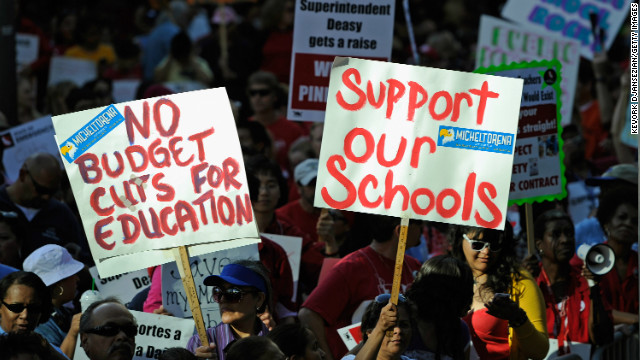Community Expresses Outrage Over California Charter Schools Association Expenditures In California 43rd Assembly Race

GLENDALE—Education leaders gathered to jointly condemn the California Charter Schools Association and the Laura Friedman for Assembly campaign for disseminating misinformation to voters and trying to buy the 43rd California Assembly race. The press conference featured over a dozen community leaders including Los Angeles Unified School Board President Steve Zimmer and Glendale Board of Education Member Christine Walters.
“It’s very important that we’re here today in the 43rd Assembly District that has become the latest battle ground in the effort to privatize, corporatize, and takeover our public education system here in Los Angeles County,” stated LAUSD Board President Steve Zimmer in his remarks before concerned parents, local teachers, representatives of the California School Employees Association (CSEA) and United Teachers Los Angeles (UTLA).
“I’m very proud to stand with colleagues today, to stand with Ardy Kassakhian, who has become the latest target in this effort. Let me be very, very clear: there are interest groups in the State of California – most especially the California Charter Schools Association – who are attempting to outright buy Assembly seats, Senate seats, local school board seats,” highlighted Zimmer.
Financial disclosures show that over $1,000,000 has been spent by the special interest group to influence the outcome of the election by smearing Ardy Kassakhian’s record as Glendale City Clerk contrary to the truth, including reporting by the Los Angeles Times that has noted that Ardy Kassakhian has “greatly improved the voting experience for Glendale’s citizens.”
“I chose to support Ardy a long time ago because Ardy has authentically supported public schools since long before he decided to run for this job,” stated Glendale Board of Education Member Christine Walters. “The reason I’m here today is less about Ardy and more about the ugliness and deception that I have seen over the last few weeks.”
Prominent community activist and President of the East Area Progressive Democrats Hans Johnson noted, “We are here out of a profound concern that outside interests are seeking to buy this election and unduly influence the outcome through spending from outside Glendale.”
Frank Higginbotham from the Glendale Teachers Association stated, “The Glendale Teachers Association endorses Ardy Kassakhian for the 43rd Assembly District. He is the only candidate that fully supports public education and will give our children a voice in Sacramento.” Higginbotham concluded by noting that Ardy “is the only candidate we trust to stand up for public schools and to fight the billionaires trying to privatize our public education system for their profit.”
The press conference was attended by a host of other local leaders including Glendale City Council Member Zareh Sinanyan, Glendale City Treasurer Rafi Manoukian, Glendale Community College Board President Tony Tartaglia, Glendale Community College Board Member Dr. Vahé Peroomian, Glendale Board of Education Member (ret.) Sandy Russell, Burbank Board of Education Member Dr. Armond Aghakhanian, and Former Burbank Teachers Association President Kim Allender.
About Ardy Kassakhian
Ardy Kassakhian grew up and attended public schools in Glendale. He was first elected Glendale City Clerk in 2005. As Clerk, he has reduced government waste by introducing environmentally sound practices, made election information easier to access and worked to increase voter participation. Ardy graduated from UCLA and the Executive Program at Harvard University’s Kennedy School of Government. He lives with his wife Courtney and their young son in Glendale.
Ardy Kassakhian is running to represent Assembly District 43, which includes the communities of Burbank, Glendale, La Cañada Flintridge, La Crescenta-Montrose and the Los Angeles neighborhoods of Atwater Village, East Hollywood, Franklin Hills, Hollywood Hills, Los Feliz and Silver Lake. The primary election will be held on June 7, 2016. To learn more about Ardy Kassakhian, visit his website at www.ArdyforAssembly.com or follow him on Facebook and Twitter. Community Expresses Outrage Over Special Interest Expenditures In California 43rd Assembly Race | Asbarez.com:























